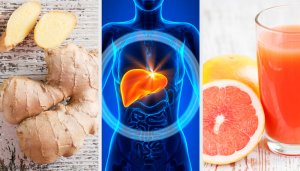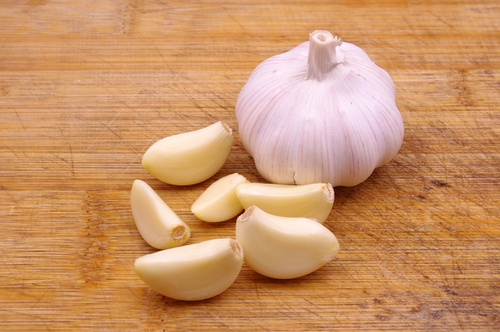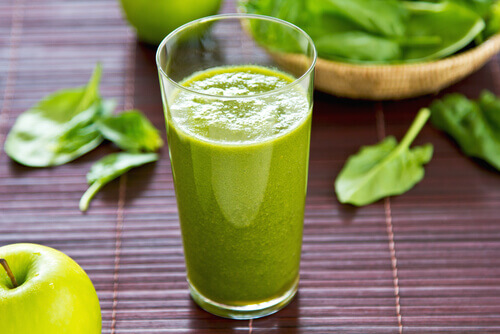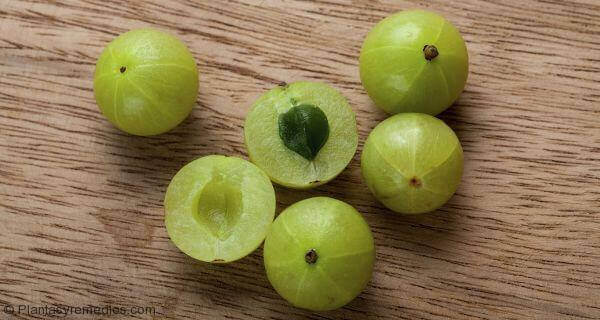What Should I Eat If I Have Fatty Liver?


Reviewed and approved by the psychologist Bernardo Peña
Fatty liver or “macrovesicular steatosis” is a disease that is generally related to poor dietary habits.
There are two kinds of fatty liver, one caused by excessive alcohol consumption and once caused by an unhealthy diet rich in fats and triglycerides, which prevent this organ from eliminating toxins efficiently.
Some people have a type of resistance to insulin, which is the hormone responsible for regulating glucose. This causes changes in the metabolism and directly affects the liver tissues.
A fatty liver causes chronic fibrosis (hardened liver). This happens when the level of functioning of this organ decreases, the fat oxidizes and as a result it gets inflamed, leading to a multitude of problems.
Common symptoms of fatty liver

- Exhaustion or fatigue
- Loss of appetite
- Pain in the right part of the abdomen
- Sensation of extreme bloating
- Nausea
- Difficulties with concentration and bad memory.
If you have these symptoms, consult a specialist so that they can carry out the appropriate tests. Treating this condition on time can prevent cirrhosis and its side effects.
There is also a biological predisposition to have fatty liver if you suffer from obesity, diabetes, high blood pressure, or have a high concentration of triglycerides in the blood.
Read also: How to Lower Triglycerides Levels Naturally
What should I eat if I have fatty liver?
In order to cure fatty liver, you need to make significant changes to your diet.
Note these recommendations that we’re going to list now so that you can include foods rich in fiber and healthy proteins in your daily diet.
Garlic

This bulb contains selenium and allicin, perfect ingredients for cleansing the liver because they increase the activation of the enzymes which promote the elimination of toxins.
We recommend you read: The Countless Benefits of Garlic and Honey
Ginger
Thanks to its high content of antioxidants, ginger is a great ally for lowering triglycerides.
Ginger tea
Ingredients:
- 1 cup of water (250 ml)
- 2 tablespoons of ginger root (30 g)
- 1 teaspoon of honey (5 ml)
Preparation:
- Heat the water. When it boils, add the ginger and leave it for 5 minutes.
- Strain the mixture into a cup.
- Add the honey and drink it while it’s warm.
You can drink this tea mid-afternoon. You should repeat this for at least two weeks.
Chard

Chard is rich in fiber, iron, magnesium, potassium and water. This makes it an excellent tonic for rejuvenating the liver cells and cleansing a fatty liver.
Grapefruit
This magnificent fruit contributes to activating certain chemicals responsible for the oxidation of fatty acids, so it is not only appropriate for this condition, but also helps to lose weight.
Drink grapefruit juice every morning and you’ll be helping your body deal with fat. This will increase your overall health.
Green tea

Linseed
Linseed contributes significant quantities of omega-3, which can help reduce the levels of fat in the blood. It also contains a lot of soluble and insoluble fiber. The first of these helps the liver with absorbing fats and the latter prevents constipation.
Gooseberries

Gooseberries are a good source of Vitamin C. What’s more, they have multiple properties for healing and cleansing the liver.
Thanks to their high content of antioxidants, they are powerful for releasing the toxins that tend to be stored in the liver. Such is the case that they are used more and more frequently to treat cirrhosis, with marvelous results.
Papaya
Among the many nutrients that papaya contains are calcium, iron and vitamins. However, its best property is its high concentration of digestive enzymes like papain and chymopapain, which influence the majority of the functions of the liver.
These enzymes are principally found in the seeds. You can dry them or buy them in a shop. If you include them in your daily diet, you will improve your digestion and cleanse your liver deeply.
Also, we advise you to exercise. Basically, start with low impact walks. Then, little by little, include moderate exercise in your routine that helps increase your cardiac activity and circulation.
This condition can be reversed by just changing your lifestyle. Reducing your intake of fats and alcohol is one of the main aspects to consider.
All cited sources were thoroughly reviewed by our team to ensure their quality, reliability, currency, and validity. The bibliography of this article was considered reliable and of academic or scientific accuracy.
- Csendes, Paula, et al. “Hígado graso: ultrasonido y correlación anatomopatológica.” Revista chilena de radiología 10.2 (2004): 50-52.
- De las Cagigas Reig, Ada Lydia, and Jorge Blanco Anesto. “Prebióticos y probióticos, una relación beneficiosa.” Revista Cubana Aliment Nutr 16.1 (2002): 63-8.
- Méndez Sánchez, Nahum, Norberto C. Chávez-Tapia, and Misael Uribe. “Hígado graso no alcohólico. Nuevos conceptos.” Revista de investigación clínica 56.1 (2004): 72-82.
This text is provided for informational purposes only and does not replace consultation with a professional. If in doubt, consult your specialist.








